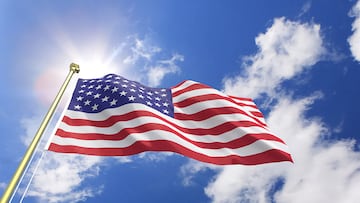This is the real reason why May Day isn’t celebrated in the United States
May Day has long roots tracing back to European pagan traditions, but is now much closer related to International Worker’s Day that coincides with the date.

May Day celebrations date back to the time of the Roman Republic. However, more recent history has completely changed the basis of the holiday and how people picture it. While there are still people that dance around maypoles and wear crowns of flowers, the day more often now conjures images of tanks rolling through Red Square or masses of people marching in cities to continue the fight for better working conditions.
The US has a complicated history with May Day. The United States doesn’t formally recognize 1 May as a national holiday; however, you may find some communities that have festivals dedicated to youth, spring, and flowers. Workers in the US honor and celebrate the struggles and achievements of workers and their unions the first Monday of September.
Celebrating May Day in Moscow, 1964 (photo by David Sholomovich) pic.twitter.com/hy1SFdhSb7
— USSR Pictures (@PicturesUssr) April 24, 2023
International Workers’ Day originated from events that took place in the U.S. Despite this, Labor Day is celebrated in September, and the global holiday is often overlooked. With the resurgence of the labor movement and an increase in workplace organization, many cities in the U.S. are now hosting parades to recognize the invaluable contributions of workers on May Day.
In the U.S., Labor Day has been held on the first Monday in September since the 1880s. There have been efforts to switch it to May to align it with International Workers’ Day, but remnants of Cold War tensions have soured this endeavor.
Unionization in the US reached its peak in 1950. That year more than a third of all workers in the country were card-carrying union members. Union membership was popular since it was organized labor that won major victories for workers. Additionally, muckrakers, activists, and unions improved the safety conditions of workers and encouraged that laws be passed to protect children from exploitive labor practices.
After World War II, Cold War politics motivated the U.S. government to restrict the power of organized labor, and laws like the Taft-Hartley Act made it illegal for unions to contribute to political campaigns. Today, this idea seems ludicrous to many as the Citizens United Supreme Court decision allows corporations to donate to campaigns.
May Day: Celebrating youth, spring, and flowers
During the Roman Republic, a celebration to honor Flora, goddess of youth, spring, and flowers arose. The first of May was in the middle of the weeklong festival of Floralia. With the expansion of the empire it reached the British Isles, where the first of May just happened to be when the Celtics celebrated Beltane. That festival was much like Floralia, so the two were essentially mashed together to become what would become May Day which would come to be a cherished holiday across Europe.
The holiday’s presence in the United States would for a long time be an obscure tradition. But with the arrival of boat loads of immigrants in the 1800s, the holiday would be purposed to save them from the “cheap commercial amusements of the day” by what historian David Glassberg called the nation’s “genteel intellectuals.”
Beginning in the 1870s, the resurgence of May Day in the United State began. Over the following years, public and private schools taught generations of students the tradition of “a-maying” where they would gather flowers and dance around the maypole on the first of May.
Am I too early for the first Maypole of the long weekend. St George's Kermis with the Dance around the Maypole by Pieter Brueghel the Younger 16th century. It's been a very stressful few days so it's lovely to feel happier and excited. pic.twitter.com/yqwcaNjHsA
— HistoryandHeritageYorkshire (@GenealogyBeech) April 28, 2023
May Day of the workers
The Second International, an international federation of socialists and trade unions in Europe, voted in 1889 to organize a day of demonstrations the following year. The date they chose was 1 May, the anniversary of an 1886 strike in Chicago that ended in bloodshed known as the Haymarket Riot. That date had been chosen to celebrate a victory almost a decade earlier establishing the eight-hour workday, that incidentally was never enforced.
After a series of bloody incidents between workers and the authorities, Congress finally passed legislation to establish the first of September as Labor Day in 1894, hoping to move away from the united, international working class celebration of 1 May. Thus, American workers take to the street on the first Monday in September to continue the struggle for better working conditions.
Related stories
Additionally, the law severely limited the ability of unions to encourage striking, saying that the practice formed a threat to national security. The bill was also influenced by McCarthyism and required that union leaders state publicly that they had no ties to the Communist Party and that they had no intention of overthrowing the government. This provision of the bill was deemed unconstitutional in 1965, but by then, many leaders had been accused of communist loyalties and removed from their posts.
Today, the impacts of the Taft-Hartley and other anti-union bills are clear, as union membership in the U.S. hit a historic low of 10.1% before recovering to 11.3% in 2022.
Complete your personal details to comment